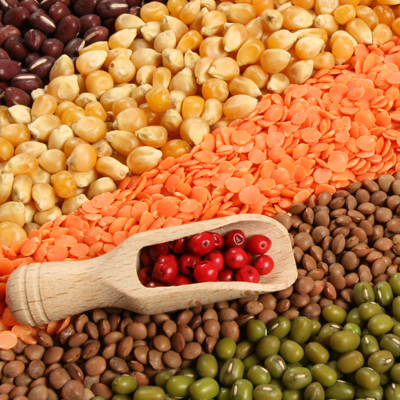Food security is generally not seen readily as either an issue that determines response to the gospel or one that determines the health of a community. However, both health and response to the gospel have strong relations to food security.
Food security role
Food security plays a significant role in transformational development, especially long-term sustainable transformation:
- This is often not understood clearly—people often see food security as food aid and as part of relief in famine-prone areas.
- Food security programming can become one of the most proactive means of lifting a community out of poverty, but handled badly, it can become a tool for exploitation or even destruction of the economy.
- People of integrity need to champion its cause, and above all, speak up on behalf of the poor.
Christian development agencies
The holistic integrated development programs of many Christian development agencies today have developed so well that livelihood and food security are taking their rightful place in giving traction to their programs. Whatever the core intervention program of the organization (clinics, water, child care, etc.), to be effective, food security and livelihood security must play a central role, since this is the lifeline for survival of poor and marginalized communities.
While the focus of the organization the author works for—MAP International (www.map.org)—is health, food security accounts for almost half of what happens in its major program, the Total Health Village (THV):
- This is what has made the programs robust and dynamic.
- It has delivered improvement in the health status of the community, coupled with prevention and treatment measures.
- The communities in the THVs have become empowered as they have come to control their natural and productive resources and gained more control of their health.
If we are to move towards achieving the Millennium Development Goal of halving global poverty, we need to consider food security.
A3U framework for food security
Food security has 4 dimensions: the Availability of food; Access to food; using surplus availability of food for Asset creation; and Utilization of food.
1. Availability
The first dimension is the availability of food in the community. In today’s world this is much less of an issue as the world has progressed tremendously in food production. However, from time to time, there is a shortfall in availability of food in drought-prone or famine-affected areas:
- Persistent famine, such as the recent famine in the Horn of Africa, can cripple an area because rainfall is insufficient for even the basic subsistence crop to be grown.
- This can make food grains unavailable and result in a food-security crisis as the community begins to starve.
The only thing that often works then is to bring in food grains from outside the area and donate them to the people to avert death through starvation. This ends up as a purely relief measure, and there is often no alternative to making the grain available year after year.
Christian development agencies can take such a situation and use a creative ‘food for work’ program to ensure that food is available in the area, so that the community does not migrate away to other areas in search of food. The program can also be used to leverage long-term availability of food by using the ‘food for work’ part of the program to create community assets such as roads, ponds, wood-lots, water shed development and planting of agricultural crops.
2. Access
Bringing in food from outside areas as food aid may satisfy the temporary availability need, and access may also become possible for the period of the intervention. However, this does not make any positive impact on the local economy—and may actually destroy whatever fledgling business exists for the local grain market.
Our purpose in development is to ensure that the local economy picks up and grain production and marketing become part of that process. Socio-economic relationships in the community help revitalize it and make it robust and vibrant.
Food aid that is not used positively to bring traction to the local economy and stimulate local grain production will make the community passive and dependent on external aid. Ultimately, access to food will become the victim. It is easy for well-meaning but poorly directed Christian development agencies to do more harm than good—including for the gospel—through their development work.[1]
3. Asset creation
In a normal community, food security is closely tied to asset creation. Surplus food produced by individuals and families is used for selling and purchasing assets. Assets are a means of saving.
The author recalls making assessments in a community regarding their savings by checking if they had savings accounts and how much money was in them. He knew that many of the families were doing very well and had greatly benefited from a livelihoods security program. However, that was not reflected itself in the number of savings accounts and amounts in those savings accounts.
A farmer then showed them his newly purchased piglets, making the point that these were his ‘savings’. His surplus grain had been sold in the market to generate funds to buy livestock. These served as a ‘liquid asset’ that could be sold whenever a crisis occurred. This was a logical move: the assets were available to him, and growing at a better rate than any bank would pay in interest.
Asset creation from surplus food available—to be liquidated later in times of crisis—represents an integral part of food security. Organizations working with communities to help them become food-secure must cater for this in their programming.
4. Utilization
The final dimension is the utilization of food that is available in the community:
- When food is in short supply, the way it is consumed by various members in the family is affected.
- In many cultures the distribution then follows the pecking order: husband first, then sons, then daughters, and finally the mother.
- Food scarcity thus does not affect everyone in the family in the same way.
Thus ensuring food security means also bringing gender equality, because providing adequate food for the family requires it to be distributed equally.
Household food-security assessment
The Rapid Food Security Status Assessment (RFSA) tool can be used for rapid assessment of the food security status of a household. This is a simple participatory tool that was designed and introduced by the author in 2001 while working in Cambodia (details can be obtained at www.ravijayakaran.com/documents). The following diagram shows some of the information generated through an RFSA exercise carried out with a focused group in the Philippines for their village:
[See the image attached to this article titled ‘RFSA of a village in Mindanao Island, Philippines’]
The first column shows the approximate breakdown of the population in that village that fell into one or other of the four RFSA categories.[2] Poverty when defined from the perspective of household food security is: ‘A household is considered to be poor if its expenditure on a consistent basis is more than its income, without the creation of an asset’. On this basis, a quick analysis here showed that approximately 60% of the community is below the poverty line, 20% just makes ends meet, and 20% is able to generate surplus. Among the population that is below the poverty line, 40% is in a condition of extreme poverty. The second and third columns show the RFSA status, and the local name that the community uses to describe the households in that category.
These categories are not based on some national figure of average household income, but on comparisons of the households in that community, which are in socio-economic interaction with each other:
- The ratios are very contextual and will change from community to community because household food security status is not based on income but on the ratio between income and expenditure for that household.
- Thus for the fragile categories of RFSA levels, for example RFSA-2, any circumstance that causes imbalance between income and expenditure, such as accident or illness, can make that household drop in RFSA status, because when expenditure is more than household income, the family has to borrow money to survive, often at exorbitant rates.
Christian development agencies should therefore recognize that access to credit, access to health care services, and investment opportunities are good buffers against collapse in household food security status.
Food security and response to the gospel
It is not surprising that household food security status and response to the gospel are correlated:
- As can be seen from the diagram, the response to the gospel is highest in RFSA-3 and RFSA-4 categories, and lowest in RFSA-1 and RFSA-2.
- This openness mainly occurs during times when that household is going through crisis.
Working with the RFSA-1 group is the hardest, but it can show the greatest impact on the community when there is a breakthrough:
- This group does not need investment but an opportunity to invest in corporate social responsibility within the community, because that brings it status, recognition, and acceptance.
- The Bible has a beautiful example in Jesus’ encounter with Zaccheus in Luke 19. Jesus’ recognition of him, and honoring him by visiting him, accepting him ‘as he was’, was enough to transform Zaccheus’ life.
- In fact he was so clearly transformed that when he declared his ‘corporate social responsibility profile’, he vowed in public to invest 50% of his assets in the lives of the poor in his community.
A case for integral mission
Households that are below the poverty line have great struggles. The debilitating impact of abject poverty is like a continued oppression on multiple fronts and can crush the spirit, make people lose hope and turn to desperate measures for coping and surviving (Prov 30:8-9). This is the group that is constantly in search of a Savior.
The gospel, which is integral and holistic, is both the proclamation and demonstration of the good newsto the poor and needy. Jesus makes a very attractive offer in giving an open invitation to all: ‘Come to me all you who labor and are heavy laden, and I will give you rest’. Christian agencies are called to be an extension of that offer. The Nazareth manifesto is also a challenge to us to be engaged in integral mission as we follow in our Lord’s footsteps (Lk 4:18-19).
In the Old Testament we have a description of one of the biggest food-security programs in history, mobilized by Joseph. God revealed his plan for his chosen people through the wisdom he gave to Joseph in interpreting Pharaoh’s dream. The massive food-security program that ensued under God’s guidance then provided a means for his people to enter Egypt through amazing circumstances.
For us as Christians, it is a call to integral mission that ensures that we proclaim and demonstrate the good news in all that we do. MAP International has in recent times started increasing its church engagement portfolio to get more churches into partnerships of integral mission in communities in the developing world. As with Joseph, God has helped them to develop new tools and strategies, particularly to help churches and their congregations to engage meaningfully in bringing transformational development through building household-level food security. They are happy to share this information with LGA readers and also partner with those with a heart for integral mission.
Endnotes
- See ‘When Helping Hurts’ by Brian Fikkert and Steve Corbett.
- The seeds represent the percentage of the villagers that fall into that category—since ten seeds represent the whole population, each seed represents 10% of the population.

